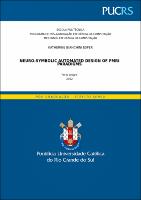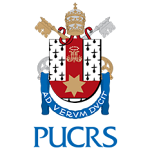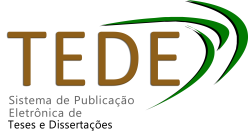| Share record |


|
Please use this identifier to cite or link to this item:
https://tede2.pucrs.br/tede2/handle/tede/10586| Document type: | Dissertação |
| Title: | Neuro-symbolic automated design of fMRI paradigms |
| Author: | Esper, Katherine Bianchini  |
| Advisor: | Meneguzzi, Felipe Rech |
| Abstract (native): | Neuroimaging techniques have been widely used in recent decades to assess brain activation patterns for neuroscience. Task design is the most important challenge for neuroimaging studies to achieve the best modeling for assessing brain patterns within and across subjects. Specifically, functional magnetic resonance imaging (fMRI) experiments rely on the precise and effective paradigm design, selecting the best sequences of stimuli to activate specific brain regions. In this project, we propose to use Planning Domain Definition Language (PDDL+) to model fMRI paradigms so that neuroscientists can design neuroimaging paradigms in a declarative way. We develop an application of automated planning for neuroscience research and presurgical planning, resulting in and a tool for automatic stimuli generation for fMRI scans. The former should help to ensure an experimental design that allows the analysis of the brain regions that are interesting in the study. The latter should help surgeons select the correct stimuli for a presurgical non-invasive exploration of the cognitive functions that might be affected by debridement of brain lesions. |
| Abstract (english): | As técnicas de neuroimagem têm sido amplamente utilizadas nas últimas décadas para avaliar os padrões de ativação do cérebro. O projeto de tarefas é um dos desafios mais importantes para os estudos de neuroimagem, para que seja possível obter a melhor modelagem para avaliar os padrões cerebrais de um sujeito e entre os sujeitos. Os experimentos de Ressonância Magnética funcional (RMf) dependem de um design de paradigmas preciso e eficaz, selecionando as melhores sequências de estímulos para ativar regiões cerebrais específicas. Neste projeto, propomos o uso de Planning Domain Definition Language (PDDL+) para modelar diferentes paradigmas e suas respectivas ativações cerebrais, resultando em uma ferramenta para geração automática de estímulos para exames de RMf. Desenvolvemos uma aplicação de planejamento automatizado para pesquisa neurocientífica e planejamento pré-cirúrgico. O primeiro deve ajudar a garantir um desenho experimental que permita a análise das regiões cerebrais de interesse do estudo. O último, deve ajudar os cirurgiões a selecionar os estímulos corretos para uma exploração pré-cirúrgica não invasiva das funções cognitivas que podem ser afetadas pelo desbridamento de lesões cerebrais. |
| Keywords: | Artificial Intelligence Neuroimagin fMRI Automated Planning Inteligência Artificial Neuroimagem RMf Planejamento Automatizado |
| CNPQ Knowledge Areas: | CIENCIA DA COMPUTACAO::TEORIA DA COMPUTACAO |
| Language: | eng |
| Country: | Brasil |
| Publisher: | Pontifícia Universidade Católica do Rio Grande do Sul |
| Institution Acronym: | PUCRS |
| Department: | Escola Politécnica |
| Program: | Programa de Pós-Graduação em Ciência da Computação |
| Access type: | Acesso Aberto |
| Fulltext access restriction: | Trabalho não apresenta restrição para publicação |
| URI: | https://tede2.pucrs.br/tede2/handle/tede/10586 |
| Issue Date: | 29-Aug-2022 |
| Appears in Collections: | Programa de Pós-Graduação em Ciência da Computação |
Files in This Item:
| File | Description | Size | Format | |
|---|---|---|---|---|
| KATHERINE_BIANCHINI_ESPER_DIS.pdf | KATHERINE_BIANCHINI_ESPER_DIS | 6.38 MB | Adobe PDF |  Download/Open Preview |
Items in DSpace are protected by copyright, with all rights reserved, unless otherwise indicated.




